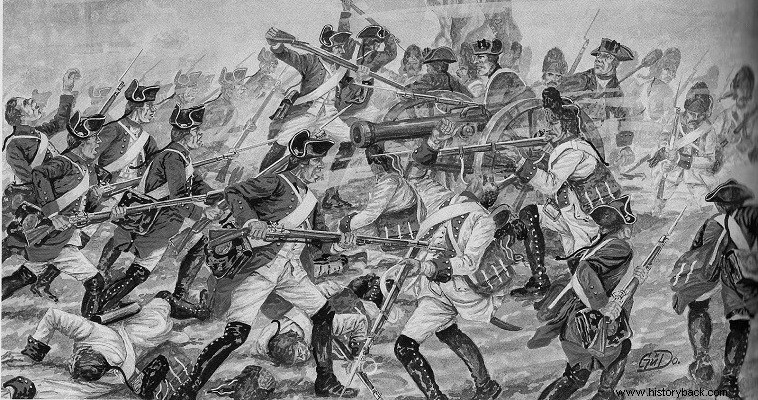
The free corps di Verger was one of the "volunteer" corps formed during the Seven Years' War (1756-63) to cover the shortage of light infantry in the Prussian Army. The corps was formed in March 1758.
It originally had a single battalion of five companies, mostly of French deserters, each with four officers, seven non-commissioned officers, a drummer, 140 musketeers and 10 "chasseurs" (crewmen). The battalion also had two 1-pounder light guns, which in 1759 were replaced by 3-pounder guns.
In 1760 a second battalion was formed and in 1761 the third and came to number 63 officers, 105 non-commissioned officers, 15 drummers and 2,250 soldiers. Its commander was Major Johann Antonius Kenzinger de Verger until 1759.
On May 26, 1759, Frederick the Great's friend Major Karl Gottlieb Theophilus Guichardt, known by the nickname "Quintus Ikilius", from a Roman centurion who took part in the battle of Pharsalus, took command.
Guihard had a special interest in ancient military history. In 1757 he even published a book on the martial art of the ancient Greeks and Romans which attracted the interest of the King of Prussia.
In a public debate about the battle of Caesar and Pompey at Pharsala Guichard had the courage to correct Frederick who named the Roman centurion Caecilius who took part in the battle Icilius. The King accepted his mistake and told Guihard that from now on he would name him Ikilius... So from being a military historian Guihard found himself a battalion commander.
He remained in the army until his death in 1775, having reached the rank of colonel because of his historical knowledge.
The corps fought well in the Seven Years' War. He began his activity in the fall of 1758 in Saxony. He fought in the unfortunate for the Prussian arms battle of Hokirch, existing heavy losses. He later distinguished himself in the operations to lift the siege of Naise in Silesia.
The corps continued to fight in Silesia. In 1760 the 2nd Battalion fought as part of the corps commanded by Frederick himself. The battalion in question particularly distinguished itself in the Battle of Dresden Bridge. The battalion first crossed the river Elbe in boats and took part in the siege of the city.
The corps continued to fight until the end of the war attached to the corps of Frederick the Great's brother Prince Heinrich of Prussia. In 1763 the corps was disbanded and its men joined the regular Prussian Army.
